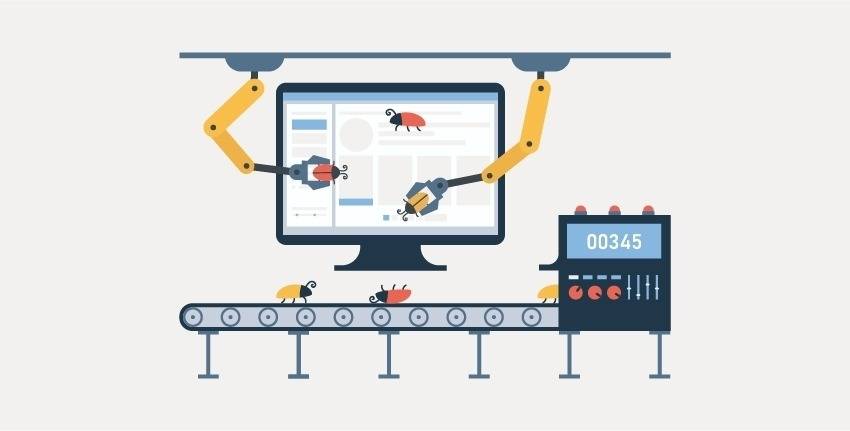In the field of software testing, automation testing has established itself as a distinct domain. Automation testing, as the name indicates, is using automated technologies to carry out test cases with little human participation, then comparing the results and creating test reports.
To keep up with the expectations for rapid yet high-quality software projects, automated testing is an essential aspect of every Agile team. Teams can boost result efficiency, increase bug detection, and much more by utilizing automation.
Testers and QA engineers save a lot of time and work on initial testing and projects that require multiple executions of the same test thanks to advancements in this sector.
4 Stages to Get Started with Automation Testing
There are four steps to getting started with automation testing. These are the following:
- Defining the automation’s scope
- Choosing a tool for automated testing
- Planning, designing, and developing are all important aspects of any project
- Execute test cases and create reports
Defining the automation’s scope
An overview of your team’s test status, the quantity of test data, and the execution environment are critical. This phase will assist you in determining the broad region of the application in which your test is being conducted. It may be defined using the following criteria:
- The technological viability of your team
- Your test scenarios’ level of difficulty
- The most crucial features and functions are being carried out
- The percentage of test components that are reused
Choosing a tool for automated testing
Despite the benefits listed above, test automation is not appropriate across all projects. While automation has benefitted many QA teams, it has also resulted in firms wasting time, effort, and money in the use of automation solutions.
The process of selecting test case management tools may take some time and effort at first, but it is critical for successful automated testing in the long term.
Planning, designing, and developing are all important aspects of any project
You must consider the goals of the testing process, your framework designs, and features, as well as the schedule for scripting and running test cases when establishing and developing an automated testing strategy.
Building your reports and executing test cases
This stage is concerned with the execution of automation test scripts, which are scripts that execute using test data as input. Test execution can be done directly with test case management tools, which will then summon the automation tool.
When this procedure is complete, the test report gives a consolidated overview of the project’s testing thus far.
Beginner’s Guide to Automated Testing
The execution plan and how the QA team implements it are crucial to the effectiveness of automated testing. Here are some things any automation testing novice should know before building their first script:
Choose a suitable execution environment
What is an execution environment, exactly? Before generating the first test case, this is the most important question to answer. The phrase “execution environment” refers to all of the components that operate together with the application’s code to create a full and functional system, such as processors, networks, and operating systems.
The most important part of the testing process is the execution environment. It entails hardware and software configuration, operating system settings, test terminals, and other test-related assistance.
Integrate tools into the framework for automated testing
Before continuing, it’s important to note that your tools must be connected with the test framework. The framework should already include your preferred tools from earlier levels.
Examine your tools to see if there are any compatibility issues or poor linking. Check that open-source tools operate well with commercial parent tools, for example.
Create and improve automation scripts
Some test engineers like to start the test process by drafting automation scripts that can be used for most test scenarios. The scripts are then refined in the execution phase using an iterative method in a highly collaborative cloud environment.
Carry out the automation
At this point in the journey, it’s best to emphasize quality over the number when it comes to testing automation. Create a smaller number of working automated test cases instead of a huge number that will need to be discarded or changed later.
Automated scripts should be developed and fine-tuned
At the start of the testing process, some test engineers like to create draught automation scripts that can be used for most test cases. The scripts are then completed in the execution phase through an iterative approach in a cloud-hosted, highly collaborative environment.
Automate the process
It’s best to prioritize quality over quantity when starting out on this adventure. Create a smaller number of working automated test cases instead of a huge number that will have to be discarded or changed later.
How to efficiently report test execution
We all know that a clear and thorough report may assist us in reaching important product development conclusions. So, how might we successfully report our test?
Each tool has its own reporting format; nonetheless, some metrics are required regardless of format:
- The total number of scripts
- All test cases are listed in a tabular format
- Test Result (each test case’s passed/failed status)
- Duration
- Name of the machine/environment
Some popular automation testing tools include Selenium, LambdaTest, Kobiton, TestProject, and many others.
If you want to have a one-window operation for all your automation and manual testing needs, we recommend using Kualitee. It can integrate with automation testing tools (e.g. Selenium) so you can put in scripts here and get results reported from the automation tool.
This way you can manage both your automation and manual testing tools from one place.


























